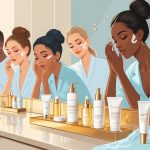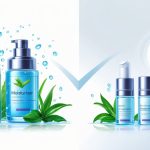Hidden Markups on Eyeshadow Palettes Discovered by Smart Shoppers
Hidden Markups on Limited Edition and Trendy Palettes
Every time I scroll through new palette launches (again? seriously?), I’m reminded how pricing seems almost random, but somehow, people still buy. Those absurd markups on limited editions and collabs? Not an accident. There’s a whole machine behind it, tuned to trends and our own weird FOMO.
Beauty Trends That Influence Pricing
Social feeds are just wall-to-wall “must-have” palettes. FOMO on steroids. If your $25 quad doesn’t have duochrome or some astrology gimmick, it’s “basic.” My dermatologist says astrology does nothing for eyelid health, by the way.
NPD Group says trend palettes and limited runs have bumped average prices up 18% in five years. Nobody remembers when even big-brand palettes were under $40. Now it’s all about “holiday drops” like the Laura Mercier Hidden Gems Palette at $55. Same formula, maybe a new insert, but TikTok hypes it anyway. Social currency, whatever that even means. My wallet just wants pigment.
Analysis of Collaboration Palettes
Still not over last year’s influencer collabs. Jaclyn Hill sneezes and Morphe launches a new one. Retailers bake hype into the price—no transparency. A regular palette is $30, slap on a celebrity and “limited run,” suddenly it’s $60.
Pro makeup artists (the real ones, not just YouTube folks) have told me they see the same pan layouts and pigment batches in collabs as in the main range. Maybe one new shimmer, maybe a pressed logo, but it’s all branding. Reddit’s on it; people admit they regret missing out, then say the shades weren’t even that unique. Collector’s hype, plain and simple.
Collector’s Value Versus Everyday Use
So, I’m juggling palettes—some I actually use, some are just collecting dust because they’re “too pretty” or, honestly, expired. Resale sites are wild—$200 for a discontinued BareMinerals palette? I’ve got one in a drawer, barely touched. No one cares.
Collectors drive the market, but most people only use a couple pans. Brands love this: high markups for “exclusivity” or “collector’s value,” but in reality, you use three shades and ignore the rest (no, blue shimmer is not for work).
Insider tip: If you want a special shade, just buy a single pan dupe. Cheaper, less waste, nobody notices but packaging nerds. The real win would be customizable kits, but then brands can’t inflate prices with fake scarcity.
Sustainability and Markups in the Palette Market
Honestly, what’s still making me nuts: plastic-wrapped palettes and sneaky extra costs that pop up everywhere. I’ve touched a dozen “eco” boxes lately, and the prices are all over the place. If beauty’s so “sustainable” now, where’s the transparency?
Eco-Friendly Packaging and Its Costs
I argued with a product manager last season about recyclable trays—he claims brands like Anastasia Beverly Hills still want glossy finishes, but PCR plastic cracks or costs a fortune. That weird “wood-pulp” cardboard? Supposedly eco, but it bumps up palette costs by 15%–23% over standard plastic, according to this market analysis. Packaging’s a PR stunt now, not just a box.
Met a shopper who wanted zero-plastic everything, but bailed at checkout after seeing a $7 markup for the “eco” version. So does clean packaging matter, or is it just for the ‘gram? I compared FSC paperboard and generic acrylic—math rarely works unless the brand’s banking on photos, not performance.
Sustainable Ingredients in Eyeshadows
Look, every time someone insists “ethically sourced mica” means your shadow’s suddenly high-end, I have to laugh. I’ve swatched those side by side with the cheap talc ones—sometimes they’re grittier, sometimes not, and “vegan” stickers? Might as well say “magic beans.” At this Frankfurt trade show, a couple chemists started throwing out numbers—organic pigments, plant binders, whatever—double the price, minimum, and nobody could say if the color payoff lasted longer. EU “green” batches? Nearly one in five flopped last year. So much for progress.
Honestly, “clean beauty” is just another excuse to jack up prices. They’ll slap on “fair trade” and “cruelty-free” in font size 72, then shrink the pans and hope you don’t notice. I skimmed this industry forecast and all those fancy “CAGR” stats? It’s just code for “we’re charging more because we can.” I wish vegan formulas were always better—I broke down a so-called luxury vegan quad once: bentonite clay’s in there, sure, but leave it in a warm bag and it crumbles. Mineral pigments? They shift under studio lights. I mean, who’s testing this stuff in real life?
Transparency in Sourcing and Pricing
I swear, the second I ask a brand rep where their mica or pigments come from, it’s “Oh, that’s proprietary, sorry!” or “We’re under NDA.” One palette comes in a “biodegradable” tray—sounds great, but the company won’t show receipts or even say which country it’s from. Just more greenwashing and a four-dollar upcharge over the basic cardboard. This trend report claims “transparency” matters most to buyers, but when’s the last time you saw a QR code linking to actual ingredient docs? I’ll wait.
I tried importing a “transparent” batch straight from certified farms once—five weeks of emails, paperwork, customs, freight, headache. The result? It cost more than just buying from a giant distributor, no joke. If brands really thought transparency built loyalty, they’d show line-by-line costs in every Sephora aisle. Instead, it’s all smoke, mirrors, and price tags that make zero sense.
Tips to Avoid Overpaying for Eyeshadow Palettes
Forty bucks for a “travel-size” palette that’s somehow pricier than the full one? Nonsense. The details get buried—people buy these thinking they’ll get a mix of mattes and shimmers, but most of the price is for packaging and viral “dupe” videos, not the actual shadows.
Spotting Exaggerated Claims and Gimmicks
Instagram is a circus—every week, some “pro” hypes an eyeshadow palette with “never-before-seen pigment.” I buy, I swipe, and the color vanishes faster than my patience. If a product description uses “technology,” “exclusive,” or “pro-makeup kit quality,” I already know I’m paying for hype, not formula.
Celebrity collabs? Hard pass. A dermatologist I trust said formulas barely change; it’s just new labels. “Dermatologist approved” is mostly marketing—read the fine print, always. “Natural makeup” usually means fewer colors, less payoff, higher price. Check these cost breakdowns: three bucks a gram is normal at high-end counters.
Box sets? “Limited edition” is their favorite fake-out. I bought one last winter, and three months later, those “exclusive” shades hit the clearance bin. The only thing that lasted was the cheap mirror—it survived everything except my carry-on.
Smart Shopping Online and In-Store
Online deals are my downfall—promo banners, FOMO, and suddenly I’m rationalizing palette #14 because “it’s 25% off.” Retailers bundle discounts with “free gifts” that actually raise the price. I always check grams per pan, not per palette—that’s where the real value is. Most people don’t realize mid-range palettes often give you more for less.
My trick? Google the palette name plus “swatches on fair/dark skin.” Reddit’s MakeupRehab is brutal but honest. In stores, I skip those useless sponge applicators and do fingertip tests. I ask staff about old launches—sometimes you get a deal, but you’ll have to dodge eight sales pitches first. Once, I got a “pro discount” just by mentioning a makeup class. (I wasn’t even enrolled, just curious about matte formulas that don’t cake.)
Finding Blendable, High-Quality Palettes at Any Budget
Big box stores? Nightmare—62 palettes, migraine lights, zero help. I look for a mix of matte and shimmer, but if a matte looks patchy on my arm, it’ll be worse on my eyes. A pro makeup artist told me that and, yeah, it’s true—saves money. “Travel-friendly” usually means bad quality or six shades of brown and two useless ones.
Drugstore brands are finally catching up—Allure keeps naming Milani and ColourPop as top picks for pigment and blendability. My weird tip: ignore influencer rankings. Look for palettes in pro kits at shoots or backstage. The best value is in palettes that actually let you do different looks—nighttime purple, daytime neutral, real shimmer, not just taupe, taupe, taupe.
If a palette says “20 universal shades” but only two are wearable, skip it. I wasted $58 on one—twelve pans untouched, and I’m still scrubbing glitter out of my sink.



